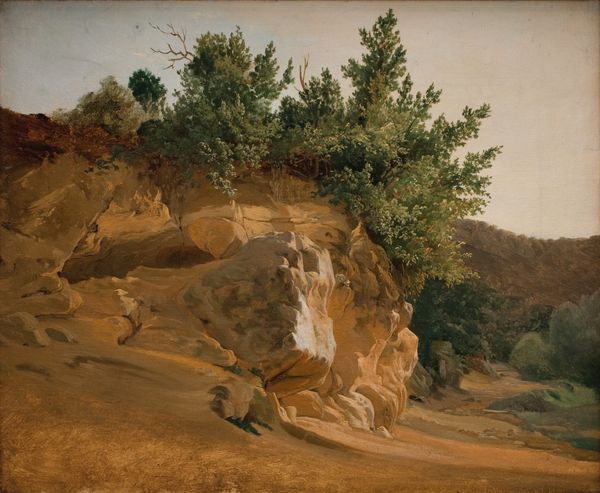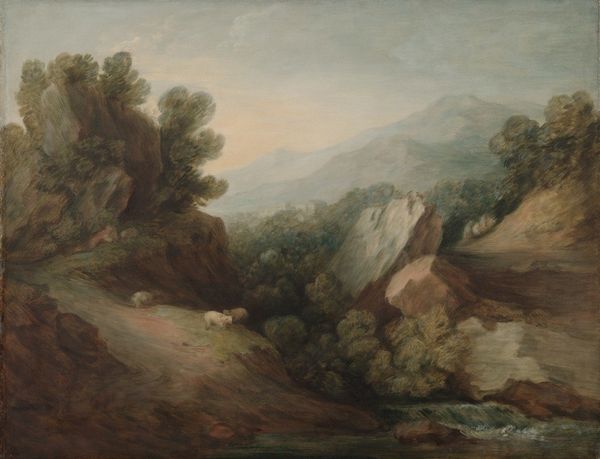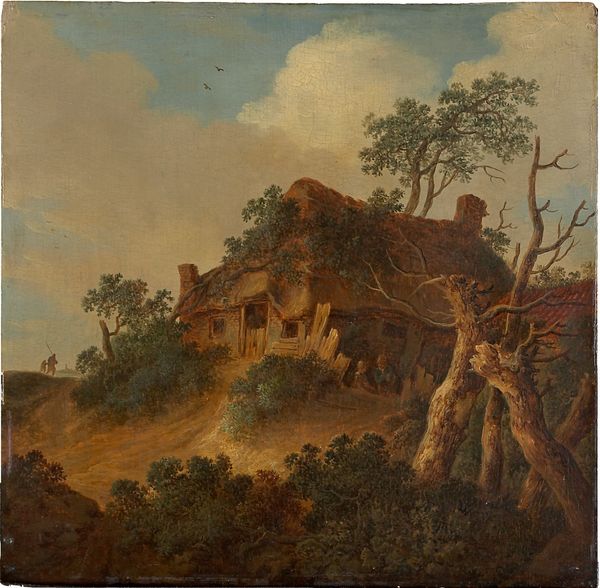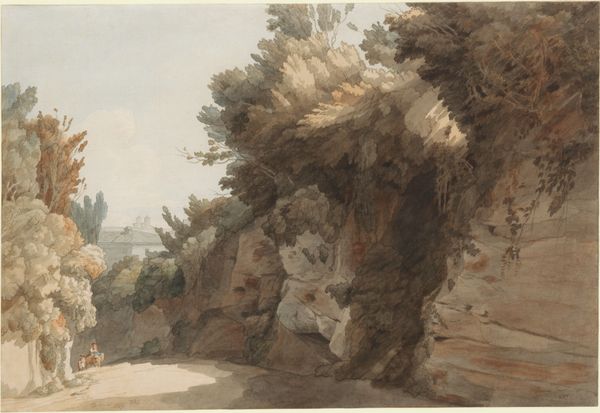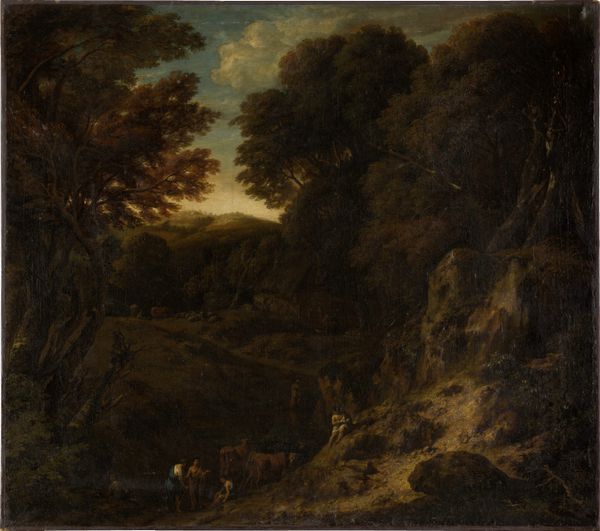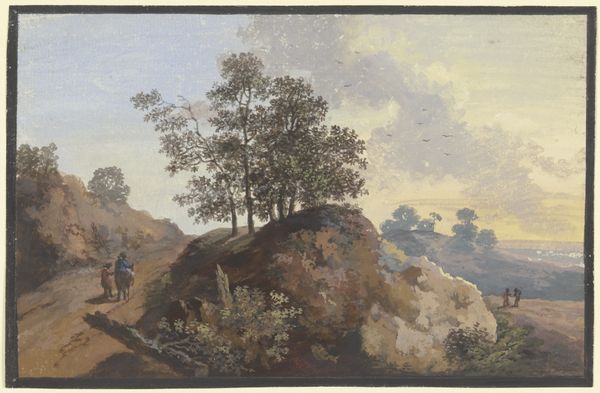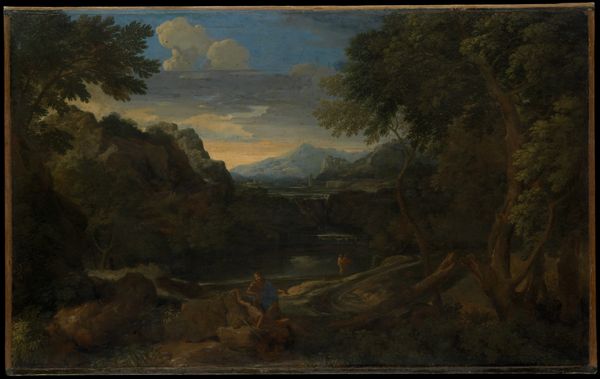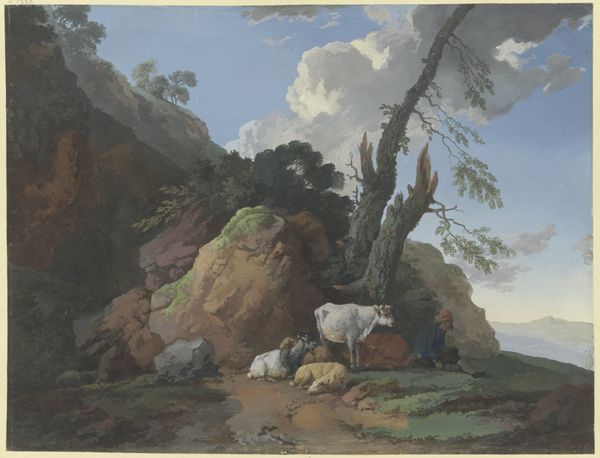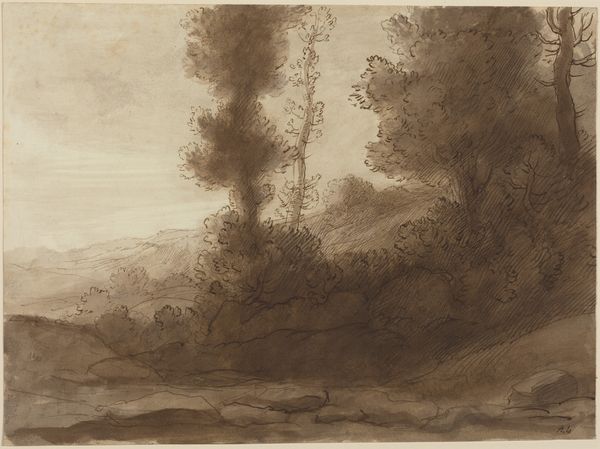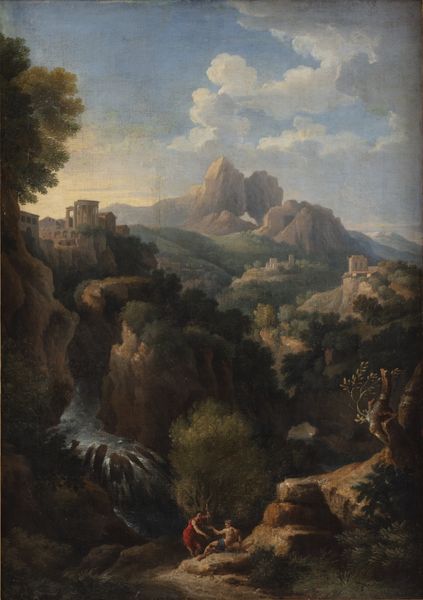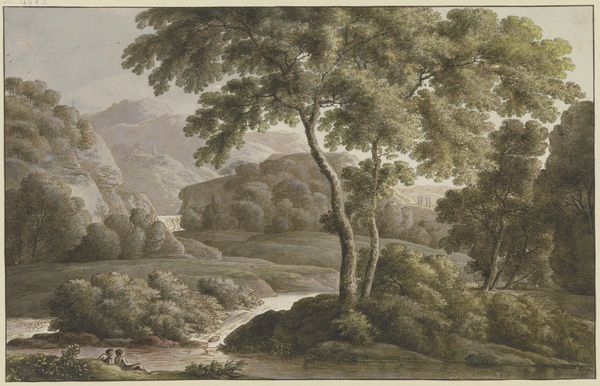
oil-paint, paper, canvas
#
oil-paint
#
landscape
#
paper
#
oil painting
#
canvas
#
romanticism
#
watercolor
#
realism
Dimensions: 44.5 cm (height) x 55 cm (width) (Netto), 53.8 cm (height) x 64.1 cm (width) x 5.5 cm (depth) (Brutto)
Curator: It has this… nostalgic charm, like something half-remembered. Editor: Indeed. What strikes me is the almost preternatural stillness, but the lighting—the warmth concentrated on the slopes—implies change, erosion, perhaps even a subtle premonition of impermanence? Curator: That’s a perfect point. This is "Landscape near Subiaco, Italy," painted by Lorenz Frølich in 1847. It's an oil on paper, mounted on canvas, and it captures a region southeast of Rome, which became quite popular for landscape artists in the 19th century. Editor: Frølich presents nature with such restrained passion. It’s a departure from, say, Turner’s grand pronouncements on nature’s sublime power. I notice, too, that while the trees seem familiar and almost inviting, there's a slightly foreboding element—the darker forms in the distance. Curator: Definitely. And what's truly arresting is the way that arched rock form repeats and echoes: like the eye sockets of a massive, petrified skull embedded in the mountainside! I can feel the weight of millennia bearing down. Editor: Yes! And isn’t it a subtle reminder of how landscapes have historically been deployed to project power or legitimize claims to land? It reminds me how landscape painting could become wrapped up with national identity. Subiaco itself has layers, holding not just religious, but also colonial symbolism. Curator: Precisely, it is also how idealized visions of nature become coded with social and cultural values. Do you notice that Frølich’s meticulous layering of pigment mimics the natural stratification of the rock itself, suggesting an analogy between the painter’s hand and the patient labor of time? Editor: I do, and thinking about the implications makes this more than just an aesthetically pleasing scene; it reveals, instead, how visual perception mediates human encounters with the natural world. Curator: Absolutely. I leave this viewing with that uncanny resonance, feeling at once intimately close to the landscape and aware of an incommensurable distance, that chasm between subject and object, knower and known… Editor: And with the enduring imperative for art to ask more complex questions, urging a more critical engagement with these landscapes and their complex layers of historical, political, and ecological meanings.
Comments
No comments
Be the first to comment and join the conversation on the ultimate creative platform.
